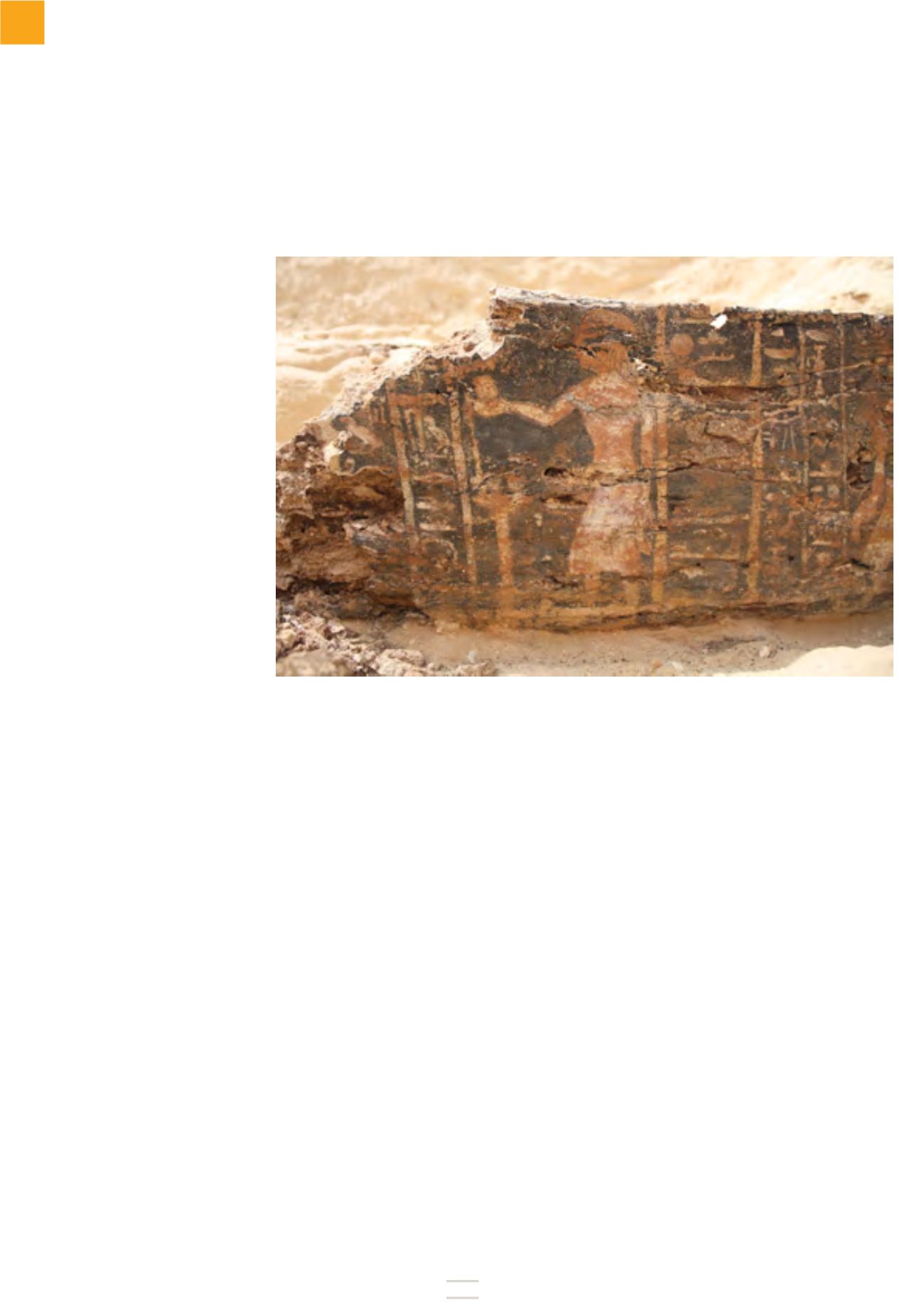

14
The workers' village of Akhetaton is very close in time to Deir el-Medina. Analyzing the site
and its findings concerning the daily life of the workers, the hours that marked their days, the
construction of their homes, customs, etc. etc., did you find evidence that suggests more
differences, or similarities? And how about with that of Giza?
Comparison with Deir el-Medina illustrates the elusive nature of the goal of reconstructing
ancient life from archaeology. Most of what we know of the life of the Deir el-Medina commu-
nity comes from texts: the ostraca and occasional papyri. Papyrus generally does not survive
well, even in the desert, and
has been an excessively
rare find at Amarna. The
widespread
use
of
potsherds and flakes of li-
mestone as writing mate-
rials was a peculiarity of
Ramesside Deir el-Medina,
not matched elsewhere in
the New Kingdom, inclu-
ding at Amarna. If one were
to remove the written ma-
terial from Deir el-Medina
and rely wholly upon its ar-
chaeology the result would
be a much impoverished
picture (as is true for Deir
el-Medina itself for the
Eighteenth Dynasty). The
Deir el-Medina evidence of-
fers powerful and intri-
guing possibilities for un-
derstanding the Amarna
Workmen’s Village. Yet one has to hesitate before assuming that the two places worked in the
same way. If we had for Amarna the same wealth of written evidence, by now an important
question would be to investigate how far Amarna adapted to changed circumstances and
how far it kept to long-established practices.
As for the Old Kingdom town at Giza, it is so different from Amarna and itself lacks adequate
written sources that comparison can only be done at a general level. At the same time, the
twenty-five years that Mark Lehner has spent directing work there has provided the only set of
data for a large settlement from ancient Egypt which is comparable to Amarna. We (the
Amarna Project group) have not yet looked closely enough at the comparisons which can be
made.
The hundreds of tables of offerings found within the sacred enclosures and temples seem
almost an obsession given their large number. Why do you think this was?
I am less sure of the answer after our recent work at the Great Aten Temple. What is emerging
is evidence, in the shape of small platforms surrounded by troughs intended to be filled with
water, for which one can offer the interpretation that they were for the preparation of the
dead. The idea is far from provable and has to stand as a hypothesis. But from the late Eighte-
enth and Nineteenth Dynasties come several tomb pictures at Thebes and Saqqara of places
where the ceremonies for the dead were performed on islands surrounded by water and by
numerous offering-tables. The offerings were for the benefit both of the spirits of the dead.
Thus the many offering-tables at the Great Aten Temple could have been for the benefit both
of the Aten itself and for the spirits of the recently dead at Amarna. But we are still at the early
stages of exploring the ground which surrounds the temple.
The side of a decorated wooden coffin from the South Tombs Cemetery. The layout of the decoration is traditional
but the usual figures of protective gods have been replaced by human offering-bearers.


















